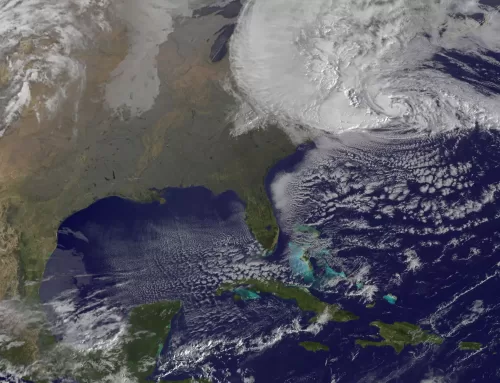Contributors: David N. Bengston (david.bengston@usda.gov) and Lynne M. Westphal (lynne.westphal@usda.gov), Strategic Foresight Group, Northern Research Station, USDA Forest Service

Jetpacks are a standard trope about the future, a symbol of a future that has long been anticipated but never seems to arrive, usually expressed as “Where’s my jetpack?”
But that may finally be changing. The U.S. Defense Advanced Research Projects Agency (DARPA) recently announced that it is studying military applications of jetpacks and offering technologically innovative contractors up to $225,000 in the initial study phase of the program (Futurism.com 2021, Reim 2021).
DARPA has an amazing track record when it comes to making futuristic ideas a reality. Founded in 1957 in response to the Soviet Union’s launch of Sputnik, DARPA has fostered many technological innovations (Bonvillain 2007). The agency’s Information Processing Techniques group supported an early network of information technology researchers that eventually created the building blocks of personal computing and the Internet. Many other technologies have been created or supported by DARPA, including high-energy lasers, stealth technology, robotics, self-driving vehicles, and computer hardware and software.
The agency is now inviting research proposals focusing on practical “Portable Personal Air Mobility Systems” which could include jetpacks or powered gliders, wingsuits, or parafoils. Whatever the specific design, the technology would be small and light enough to be carried by one person. And as envisioned by DARPA, these systems would be simple to operate – someone with little training could fly them with relative ease. You wouldn’t need to be a jet pilot to use a jetpack.
DARPA anticipates that there will be many civilian uses for this technology: “Within the private sector, a large market for personal mobility systems exists for emergency first responders, including police, search and rescue, and particularly time critical ambulance response. Depending on the system, a wide variety of less critical use cases may emerge for commercialization including urban mobility or recreation.” (DARPA 2021, p. 5).
Implicit in the uses outlined by DARPA are numerous forestry applications. Just as soldiers may someday use the technology to infiltrate hostile territory, wildland firefighters could be rapidly deployed to remote areas and have much greater off-road mobility when they get there. Search and rescue operations could benefit from this type of mobility system, as well as any other activity that requires getting to inaccessible places in the forest.
There could be many recreation applications if jetpacks are commercialized and become reasonably affordable. They could provide quick access to remote wilderness areas, a favorite fishing hole, or a deer blind that is normally a long hike. They might significantly increase access for those with mobility problems. They could even become their own recreation activity, like jet skis, ATVs, and snowmobiles. Combined with other emerging technology, jetpacks and Augmented Reality together could open up new kinds of forest recreation, such as cosplay.
Like every new technology in the woods, jetpacks would also create new challenges for recreation managers. Noise management, especially in designated Wilderness, could be an issue. Takeoffs and landings may disturb wildlife and other forest visitors. And while jetpacks might be useful in search and rescue, they could also increase the need for search and rescue if jetpackers crash or are injured landing in remote parts of the forest.
The announcement of DARPA’s new jetpack research program is what futurists call a “weak signal” of change – an early glimpse into a possible and different future (Hiltunen 2006). This signal is one of several thousand that have been found in the US Forest Service’s “Forest Futures Horizon Scanning Project” (Hines et al. 2019), an ongoing effort to identify and explore the meaning of emerging issues and trends that could help shape the future of forestry.
Jetpacks may sound far-fetched, but they could have significant implications for forest management. Although in its initial stages, “Portable Personal Air Mobility Systems” – along with other weak signals of change – may be worth monitoring to avoid being blindsided by disruptive change.
About the Authors
 David Bengston is an environmental futurist with the Strategic Foresight Group, Northern Research Station, US Forest Service, and an adjunct professor at the University of Minnesota. He graduated from the Houston Foresight Certificate Boot Camp and worked with Houston Foresight on developing a Horizon Scanning system in his capacity as a futurist with the US Foresight Service.
David Bengston is an environmental futurist with the Strategic Foresight Group, Northern Research Station, US Forest Service, and an adjunct professor at the University of Minnesota. He graduated from the Houston Foresight Certificate Boot Camp and worked with Houston Foresight on developing a Horizon Scanning system in his capacity as a futurist with the US Foresight Service.
For more on David: nrs.fs.fed.us/people/Bengston & Google Scholar Profile
Lynne Westphal is a Research Social Scientist with the Strategic Foresight Group, Northern Research Station, US Forest Service. She focuses on applying and advancing foresight tools to improve forest and natural resource management.
For more on Lynne: nrs.fs.fed.us/people/westphal
Literature Cited
DARPA. 2021. SBIR Opportunity: Portable Personal Air Mobility System. Beta.sam.gov. March 2, 2021. https://beta.sam.gov/opp/66b0b25776a1449785e12e030cabfa7b/view#general
Bonvillain, W.B. The once and future DARPA. Pages 57-70 in: Francis Fukuyama (ed.), Blindside: How to Anticipate Forcing Events and Wild Cards in Global Politics. Washington, DC: Brookings Institution Press. 198 p.
Futurism.com. 2021. DARPA is officially studying combat jetpacks for the military. Futurism.com. March 6, 2021. https://futurism.com/the-byte/darpa-officially-studying-combat-jetpacks-military
Hiltunen, E. 2006. Was it a wild card or just our blindness to gradual change? Journal of Futures Studies. 11(2): 6 -74. https://jfsdigital.org/wp-content/uploads/2014/01/112-A04.pdf
Hines, A.; Bengston, D.N.; Dockry, M.J. (eds.). 2019. The Forest Futures Horizon Scanning Project. Gen. Tech. Rep. NRS-P-187. Newtown Square, PA: U.S. Department of Agriculture, Forest Service, Northern Research Station. 81 p. https://www.fs.usda.gov/treesearch/pubs/57939
Reim, G. 2021. DARPA kicks off feasibility study of military jetpacks. FlightGlobal. March 5, 2021. https://www.flightglobal.com/defence/darpa-kicks-off-feasibility-study-of-military-jetpacks/142755.article




